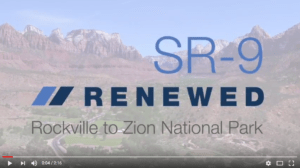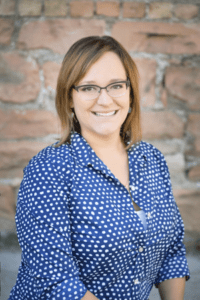By Leah Jaramillo for EDRBlog.org
 Public participation can be considered risky or a chore, particularly when an issue or decision is highly technical and requires a lot of education to build understanding. I’ve had technical experts tell me that people just don’t understand the information they are sharing or get focused on technicalities that are “outside” the issue to be discussed. With either public participation or “capital C” Collaborative processes, decision-makers sometimes fear that they have to hand over decision-making power or control, but this is rarely the case. The public often has experiential knowledge that can benefit decision-makers. Sometimes informing the public about your process is enough to build understanding and support over time. Other times, you may need to engage the public at critical decision-points to ensure the decisions you move forward with are sustainable. So, how do you engage them and when?
Public participation can be considered risky or a chore, particularly when an issue or decision is highly technical and requires a lot of education to build understanding. I’ve had technical experts tell me that people just don’t understand the information they are sharing or get focused on technicalities that are “outside” the issue to be discussed. With either public participation or “capital C” Collaborative processes, decision-makers sometimes fear that they have to hand over decision-making power or control, but this is rarely the case. The public often has experiential knowledge that can benefit decision-makers. Sometimes informing the public about your process is enough to build understanding and support over time. Other times, you may need to engage the public at critical decision-points to ensure the decisions you move forward with are sustainable. So, how do you engage them and when?
Consider the following tools from the International Association for Public Participation (IAP2), including their Core Values and Spectrum of Engagement. Fundamentally, IAP2 believes that people who are affected by a decision deserve an opportunity to be involved in the decision-making process (Core Value 1). As a public participation practitioner, I believe every project or process should consider ways in which the public can be brought along. In the same way that Collaboration requires a little give and take, so does public participation. IAP2 Core Value 2 states, “public participation includes the promise that the public’s contribution will influence the decision.” To begin, think about the ways in which public engagement might help your process. Don’t be afraid to step past the “inform” level to get real and meaningful input from the public. Think about what the public might need to know in order to answer the questions you are asking, and how can you provide that information? Then, think about what you plan to do with the information provided by the public. It is important not to ask for input if you can’t use it or don’t intend to.
Get notified when new articles are posted to the EDR blog – sign up for our email list »
For example, I recently completed work on a roadway reconstruction project on State Route 9 (SR-9 project) in Springdale, Utah, with the Utah Department of Transportation (UDOT). UDOT understood that traffic in Springdale is very different than in other parts of the state and really wanted to understand how to minimize impacts to the town while still building the roadway in an efficient amount of time. Additionally, UDOT understood that the Town had a special character and set of values that were important to maintain. The team wanted to rehabilitate the road, but not at the expense of the Town. So, we talked about what we knew and what we didn’t know. Then we talked about the ways we could try to find out the information we still needed.
We held a public open house to inform people of the project and hear their thoughts on the project. Surprisingly, most of the feedback was about other issues in Town and not particularly related to the roadway project. This was great, because then we were able to parse out our issues and move along. We invited the Town and Zion National Park to send representatives to our team meetings, which they attended for the duration of the project. Then we established a Community Working Group (CWG) to help define the contract specifications during the Design phase to determine how the work would occur and then to incentivize the contractor to be responsive to the public during construction. We knew this was a place that the public could really weigh in and help us balance time, cost and impact across the project. Overall, these were effective practices which helped involve and engage the public on our project.
Yet input is only meaningful if it works within your decision-making framework. IAP2 Core Value 3 says, “public participation promotes sustainable decisions by recognizing and communicating the needs and interests of all participants, including decision makers.” The intent of this value is to ensure that your regulatory framework, legislative mandates and other guiding principles can be upheld while still partnering with the public to develop wise and sustainable outcomes.
Again on the SR-9 project, there was a large knowledge gap between the UDOT team and the CWG. UDOT wanted the CWG to educate them about the realities of Zion National Park visitation throughout the year, the character and values of the community they wanted to maintain, and the intricacies of an economy based primarily on seasonal tourism. In return, the UDOT team needed to educate the CWG about its project delivery process, the realities of construction phasing and cost, and the overall budget for the project. As we worked through the project, both parties learned to explain the things that bound the project from their perspective. Because UDOT had committed to “involve” the public – to work with them to ensure their concerns and issues were directly reflected in the project outcome – the team developed a project contract that met the needs of all parties, completed the project in one year and minimized impacts where possible.
Moreover, the second part of the “involve” level of the IAP2 Spectrum commits the project team/decision-maker to providing feedback on how public input influenced the decision. Throughout the SR-9 project we sent regular email updates and posted monthly articles in the town newsletter to keep people informed on project progress, what we were hearing from them, and how we were using that information to make project decisions. We held several additional open houses, continued meeting with the CWG and asked them to share the information with their respective groups. Fliers and posters were provided around town and in businesses, and presentations were made to the Town Council and Visitor’s Bureau. A project hotline and email were also closely monitored and issues were responded to within the same business day whenever possible.
So, when starting a project, look at the IAP2 Spectrum and decide what promise to the public you can make in your process. Think about it at the global level and then also in smaller segments of your process. Not every opportunity to engage the public will be made at the same spectrum level, even during the same process. Sometimes it makes sense to just tell people what you are doing (inform), and other times you may really need to know how people feel or think they may be affected by a decision (involve). Sometimes you may think you just need to tell people what you are doing only to hear that they want or need to be engaged at a deeper level. I always recommend defining the opportunities for engagement, communicating how input will be used, and then checking back in to make sure that if what you heard/did is accurate, useful and effective. Like Collaboration, public participation is often an exercise in trust-building and the more transparent you are with the process, the more likely you are to build trust.
 Leah Jaramillo is Vice President of Somers-Jaramillo + Associates, a Salt Lake City-based public participation consultancy, and has nearly 15 years’ experience in the practice. Leah is also President of the International Association for Public Participation US Affiliate (IAP2 USA) and a fellow of the EDR program’s Short Course on Effective Natural Resources Collaboration.
Leah Jaramillo is Vice President of Somers-Jaramillo + Associates, a Salt Lake City-based public participation consultancy, and has nearly 15 years’ experience in the practice. Leah is also President of the International Association for Public Participation US Affiliate (IAP2 USA) and a fellow of the EDR program’s Short Course on Effective Natural Resources Collaboration.
